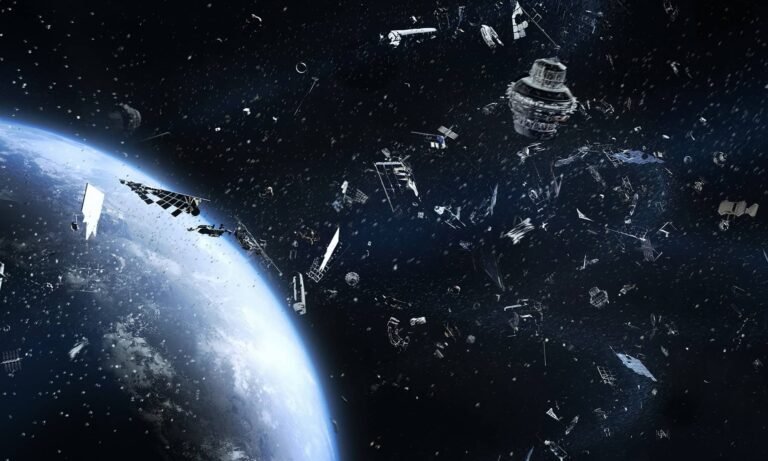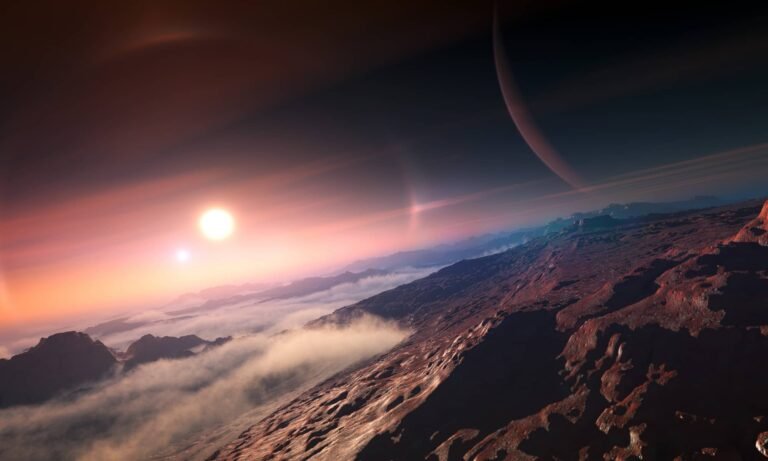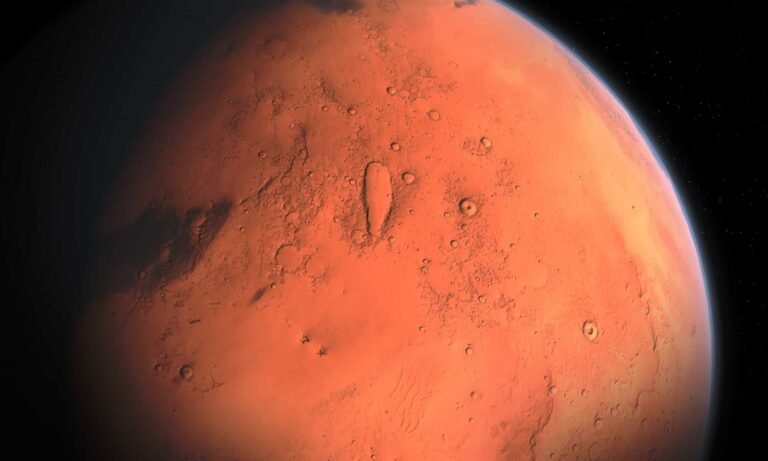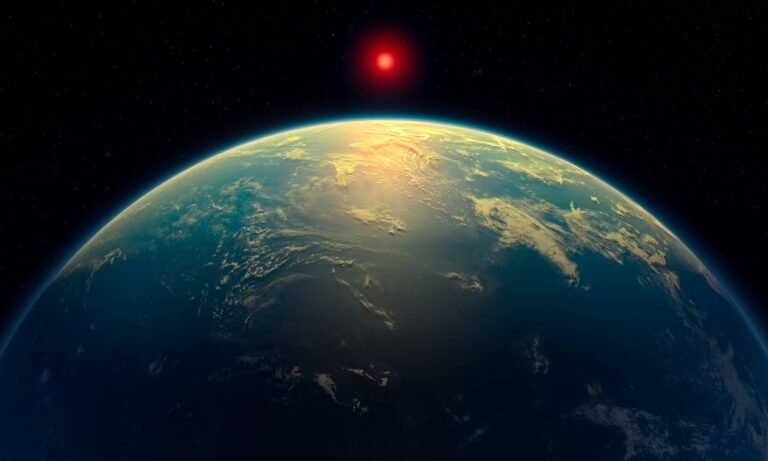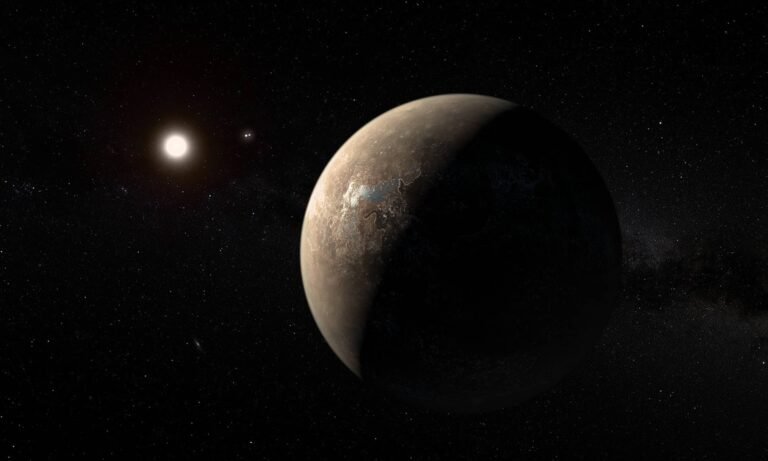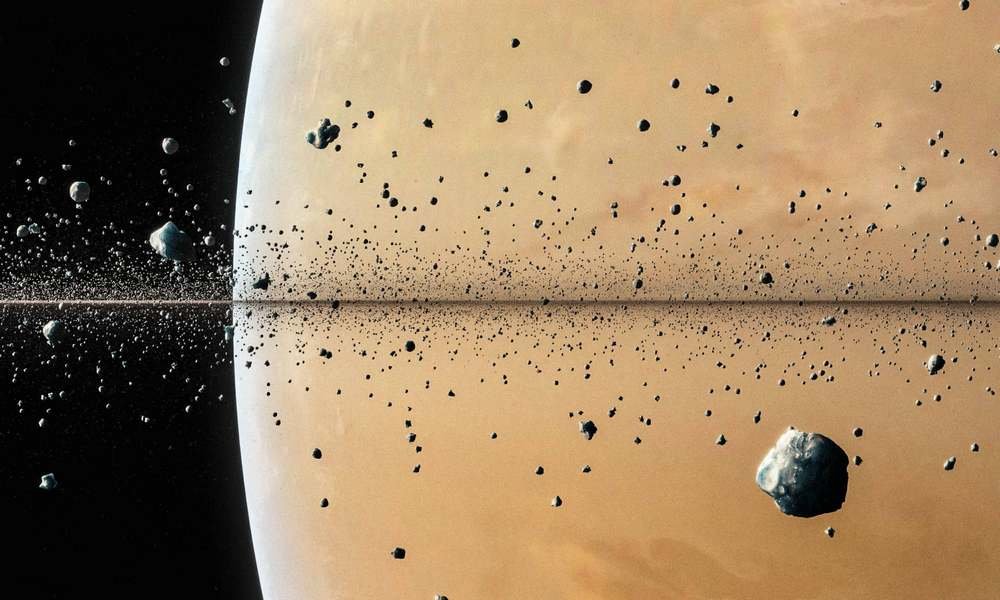
Saturn, the sixth planet from the Sun, is renowned for its spectacular rings, making it one of the most recognizable celestial bodies in our solar system. This gas giant holds a position notable for both its size and unique characteristics. With a diameter of approximately 120,536 kilometers, Saturn is the second-largest planet, eclipsed only by Jupiter. Its composition primarily consists of hydrogen and helium, creating an atmosphere rich in various gases that exhibit stunning weather patterns, including fierce storms and high-speed winds.
The planetary structure of Saturn includes a dense core surrounded by metallic hydrogen and gaseous layers. This unique arrangement contributes to Saturn’s low density, as it is the only planet in the solar system that is less dense than water. Saturn’s prominent feature, its rings, consists of countless particles ranging from tiny ice grains to larger boulders, all of which orbit the planet. These rings extend outwards to a remarkable distance, spanning hundreds of thousands of kilometers while remaining quite thin in width, leading to their mesmerizing appearance.
The discovery of Saturn’s rings dates back to 1610 when astronomer Galileo Galilei first observed them through his telescope. However, it was not until the 17th century that Christiaan Huygens provided a more detailed description, identifying these rings as distinct structures encircling the planet. Since then, Saturn’s rings have captivated astronomers and space enthusiasts alike, prompting extensive research into their formation, evolution, and significance in understanding the nature of planetary systems. The study of these rings not only enhances our comprehension of Saturn itself but also yields insights into the dynamics of disk systems around other celestial bodies, reaffirming their essential role within planetary science.
- Made of Ice and Rock – Saturn’s rings consist of billions of ice and rock particles, ranging in size from tiny grains to massive chunks several meters wide, all orbiting the planet in a dazzling, dynamic system shaped by gravity.
- Alphabetically Named – The rings are labeled in the order they were discovered, not by their position. They go from D, C, B, A, F, G to E. With the D ring being a very faint ring and the E ring capable of fitting almost 2 billion Mars’.
- Extremely Thin – Despite their massive width, Saturn’s rings are astonishingly delicate, measuring only about 10 meters (30 feet) thick on average, making them incredibly flat compared to their overall size.
- Not Permanent – Saturn’s rings are gradually fading as their icy and rocky material is pulled into the planet by gravitational forces, a process that will eventually leave Saturn bare over millions of years.
- Galileo’s Mistake – When Galileo first observed Saturn’s rings in 1610, he thought they looked like “ears” or “handles” on the planet rather than a ring system.
Composition and Structure of the Rings
The majestic rings of Saturn are a captivating feature of our solar system, primarily composed of ice particles, rocky debris, and a fine distribution of dust. These components vary significantly in size, from microscopic grains to larger boulders measuring several meters across. The rings are categorized into several distinct sections, known as the A, B, and C rings (up to G), which differ not only in their composition but also in their physical characteristics such as width and thickness.
- A Ring: This is the outermost of the large rings and is well defined with a bright appearance.
- B Ring: The B Ring is the largest and most massive, with a thick composition of ice and particles.
- C Ring: Situated next to the B Ring, the C Ring is fainter and less dense.
- D Ring: Found closer to the planet, the D Ring is quite thin and not very bright.
- E Ring: This is a very diffuse ring, primarily composed of tiny ice particles.
- F Ring: Known for its narrow and dynamic structure, the F Ring is located outside the A Ring.
- G Ring: The outermost ring, the G Ring, is less prominent but intriguing nonetheless.
The A ring, the outermost layer, is approximately 14,600 kilometers wide and exhibits a wealth of icy particles that reflect sunlight, giving the ring its brilliant appearance. The B ring, located just inward of the A ring, is the widest and most massive, containing a denser accumulation of ice and rock, which contributes to its darker coloration. In contrast, the C ring is more transparent and less dense, composed of smaller and more diffuse particles, allowing glimpses of Saturn’s atmosphere beyond it.
One of the most intriguing aspects of Saturn’s rings is the numerous gaps and divisions that exist within them. The most notable of these is the Cassini Division, a gap that separates the A and B rings. This division is caused by the gravitational influence of Saturn’s moons, which exert a force that prevents the accumulation of particles in specific areas, creating an observable void. Additionally, the presence of smaller moons, known as shepherd moons, helps to maintain the structure of the rings by providing gravitational forces that keep the particles confined to particular regions. Understanding the composition and intricate structure of Saturn’s rings not only enhances our knowledge of planetary formation but also reveals the dynamic and complex interactions between celestial bodies within our solar system.
Formation Theories of Saturn’s Rings
The formation of Saturn’s rings has intrigued scientists for centuries, leading to a variety of competing theories that aim to explain their origin. One prominent hypothesis suggests that these magnificent rings resulted from the collision of celestial bodies, such as comets or moons, which shattered upon impact in close proximity to the planet. This theory posits that the remnants of these bodies have now become the intricate and dynamic structure of Saturn’s rings.
Another leading theory centers on the disintegration of a former moon or moonlet that ventured too close to Saturn. The planet’s immense gravitational pull could induce tidal forces, which, if sufficiently strong, could cause the moon to break apart. The fragments of this disintegrated body may have subsequently coalesced or been captured into the ring system we observe today. This phenomenon highlights not only the destructive potential of Saturn’s gravitational field but also its ability to shape the composition of its rings.
Furthermore, gravitational interactions between the rings and Saturn’s numerous moons play a significant role in ring dynamics and stability. Some recent studies have indicated that the orbits of these moons contribute to the formation of gaps and the maintenance of ring structures, confirming the intricate interplay between these celestial entities. Research conducted by the Cassini spacecraft has provided refined data supporting these theories, as it observed the ring system extensively during its mission, unveiling details about particle composition, ring dynamics, and their interactions with Saturn’s moons.
Understanding the formation of Saturn’s rings is a complex endeavor that combines observations, simulations, and theoretical models. Ongoing research continues to refine these theories, shedding light on the history of Saturn and its spectacular ring system. The exploration of Saturn’s rings thus remains a dynamic field of study, revealing more about the processes that govern celestial phenomena.
What Causes the Rings to Fade?
Saturn’s rings are gradually disappearing due to their composition and the planet’s gravity. Made of billions of ice particles, the rings are continuously drawn inward, where they either collide and break apart or get absorbed into Saturn’s atmosphere.
Studies suggest the rings are not permanent and may vanish within a few hundred million years—brief in cosmic terms. Researchers have observed that gravitational forces accelerate this decay, causing the rings to disappear faster than previously expected.
Future Exploration and What Lies Ahead
The exploration of Saturn and its iconic rings represents a fascinating frontier in planetary science. The Cassini spacecraft, which operated from 2004 to 2017, provided unprecedented insights into the structure and dynamics of Saturn’s rings. With its suite of scientific instruments, Cassini collected vast amounts of data that revealed complex interactions within the ring system. The mission has not only enhanced our understanding of Saturn’s rings but has also set a high benchmark for future exploration endeavors.
Looking ahead, several planned missions aim to further unravel the mysteries surrounding Saturn and its rings. One of the prominent projects is NASA’s proposed mission, the Saturn Orbiter and Titan Plane (SOTI), which seeks to study Saturn’s atmosphere and its moons, including Titan. By analyzing both the planet itself and its larger moons, scientists expect to gain valuable insights into the formation and evolution of planetary systems, including the ring structures. The focus on Titan, in particular, is of great interest due to its unique atmosphere and potential for hosting life, which might interact with Saturn’s rings in unexplored ways.
Moreover, ongoing research initiatives continue to explore the lifespan and evolution of Saturn’s rings. Scientists are investigating the processes that shape these structures, including collisions between ring particles and the gravitational influences from Saturn’s moons. Understanding the longevity of the rings can provide essential clues about the fate of similar planetary ring systems throughout the universe, giving context to our place within it. Future missions, combined with ongoing research, will undoubtedly enhance our knowledge and appreciation of Saturn’s rings, revealing not only their complex beauty but also their significance in the broader cosmic narrative.
What’s More
The posts in My Blog feature reflective, story-driven pieces rooted in personal and societal insights.
The topics in My Interests explore abstract, philosophical ideas and their cultural and societal impact.
👁️ 5,772 Views





